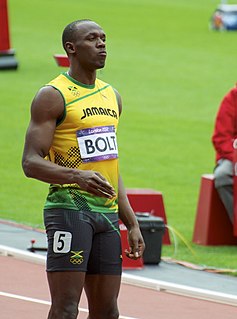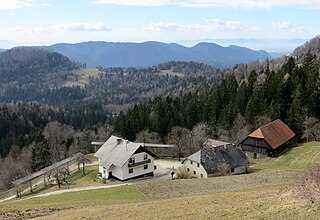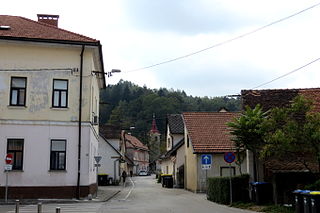Related Research Articles

Sprinting is running over a short distance at the top-most speed of the body in a limited period of time. It is used in many sports that incorporate running, typically as a way of quickly reaching a target or goal, or avoiding or catching an opponent. Human physiology dictates that a runner's near-top speed cannot be maintained for more than 30–35 seconds due to the depletion of phosphocreatine stores in muscles, and perhaps secondarily to excessive metabolic acidosis as a result of anaerobic glycolysis.

A half marathon is a road running event of 21.0975 kilometres —half the distance of a marathon. It is common for a half marathon event to be held concurrently with a marathon or a 5K race, using almost the same course with a late start, an early finish or shortcuts. If finisher medals are awarded, the medal or ribbon may differ from those for the full marathon. The half marathon is also known as a 21K, 21.1K or 13.1 miles, although these values are rounded and not formally correct.

The Coastal–Karst Statistical Region is a statistical region in southwest Slovenia. It covers the traditional and historical regions of Slovenian Istria and most of the Karst Plateau, which traditionally belonged to the County of Gorizia and Gradisca. The region has a sub-Mediterranean climate and is Slovenia's only statistical region bordering the sea. Its natural features enable the development of tourism, transport, and special agricultural crops. More than two-thirds of gross value added are generated by services ; most was generated by activities at the Port of Koper and through seaside and spa tourism. The region recorded almost a quarter of all tourist nights in the country in 2013; slightly less than half by domestic tourists. Among foreign tourists, Italians, Austrians, and Germans predominated. In 2012 the region was one of four regions with a positive annual population growth rate (8.1‰). However, the age structure of the population was less favourable: in mid-2013 the ageing index was 133.3, which means that for every 100 inhabitants under 15 there were 133 inhabitants 65 or older. The farms in this region are among the smallest in Slovenia in terms of average utilised agricultural area per farm and in terms of the number of livestock on farms.
Jerneja Perc was a Slovenian sprinter who specialized in the 100 metres.

Bela Peč is a small dispersed settlement in the Municipality of Kamnik in the Upper Carniola region of Slovenia.

The Upper Carniola Statistical Region is a statistical region in northwest Slovenia. It is a region with high mountains, including Mount Triglav, and is almost entirely Alpine. A large part of this statistical region is protected as a national park. The relief and climate are good bases for tourism. In 2013, the region recorded almost 19% of tourist nights in Slovenia, of which 78% were by foreign tourists. The region ranked second in Slovenia in number of tourist beds per 1,000 population, even though it had just over half as many beds as the Coastal–Karst Statistical Region. In 2013, the registered unemployment rate here was the lowest in Slovenia, 3 percentage points lower than the national average and more than 8 percentage points lower than in the Mura Statistical Region, where the registered unemployment rate was the highest. Although agriculture in this region is not among the most important activities, the farms are among the largest in the country both in terms of average utilised agricultural area per farm and in terms of the number of livestock per farm.

The Mura Statistical Region is a statistical region in northeast Slovenia. It is predominantly agricultural with field crops representing over three-quarters of the total agricultural area. Climate and soil combined have made it the region with the highest crop production, but its geographical position and inferior infrastructure put it at a disadvantage and it is the region of Slovenia with the lowest GDP per capita and the highest rate of registered unemployment.

The Carinthia Statistical Region is a statistical region in northern Slovenia along the border with Austria.

The Central Sava Statistical Region is a statistical region in Slovenia. This statistical region in the Sava Hills is the smallest region in the country in terms of both area and population. In early-2010 almost 41,700 people lived on 264 km², meaning that together with the Central Slovenia Statistical Region it is the most densely populated statistical region. The natural and geographic features of this region create conditions for industrial activities and more than a third of gross value added is still generated by manufacturing, mining, and other industry. In 2013, the region once again recorded the highest negative annual population growth rate (−11.9‰), which was mainly a result of migration to other statistical regions. Among all statistical regions in 2013, this region had the highest negative net migration between regions; namely, −9.5. This region also stands out by age of mothers at childbirth. In 2013 first-time mothers in the region were on average 28.5 years old, whereas first-time mothers in the Central Slovenia Statistical Region were on average 1 year older. In the same year, the number of unemployed persons increased further. The registered unemployment rate was among the highest in the country (16.6%). In comparison with other regions, this is 7 percentage points more than in the region with the lowest registered unemployment rate, Upper Carniola, and almost 1 percentage point less than in the region with the highest unemployment rate, the Mura Statistical Region. According to the labour migration index, this is the most residential statistical region. In 2013, 60% of people in the region worked in their region of residence, and 40% worked in another region.

}}

Jerneja Vas is a small settlement southwest of the town of Črnomelj in the White Carniola area of southeastern Slovenia. The area is part of the traditional region of Lower Carniola and is now included in the Southeast Slovenia Statistical Region.

Otovec is a settlement northwest of the town of Črnomelj in the White Carniola area of southeastern Slovenia. The area is part of the traditional region of Lower Carniola and is now included in the Southeast Slovenia Statistical Region.

Spodnja Šiška is a formerly independent settlement in the northwest part of the capital Ljubljana in central Slovenia. It is part of the traditional region of Upper Carniola and is now included with the rest of the municipality in the Central Slovenia Statistical Region.
Cultural silence was the boycott, ordered in January 1942 by the communist-dominated Slovene Liberation Front (OF), of all cultural activities and events connected with the German and Italian annexation of Slovenia because the Axis powers authorities limited or forbade cultural activities in Slovene. It was symbolically announced at a concert in the Union Auditorium in Ljubljana with the popular song The Linden Tree Became Green. After the capitulation of Italy in 1943, it meant a complete stop to all cultural activity outside the OF.

The Municipality of Črnomelj is a municipality in southeastern Slovenia. The seat of the municipality is the town of Črnomelj. The municipality is at the heart of the area of White Carniola, the southeastern part of the traditional region of Lower Carniola. It is now included in the Southeast Slovenia Statistical Region.
2022 in sports describes the year's events in world sport.

Athletics at the 2020 Summer Olympics were held during the last ten days of the Games. They were due to be held from 31 July – 9 August 2020, at the Olympic Stadium in Tokyo, Japan. Due to the COVID-19 pandemic, the games were postponed to 2021, with the track and field events set for 30 July – 8 August 2021. The sport of athletics at these Games was split into three distinct sets of events: track and field events, remaining in Tokyo, and road running events and racewalking events, moved to Sapporo. A total of 48 events were held, one more than in 2016, with the addition of a mixed relay event.

St. Bartholomew's Church — referred to by locals as the Old Church — is a Catholic filial church and one of the oldest church buildings in Ljubljana, Slovenia.

Neeraj Chopra is an Indian track and field athlete who competes in the javelin throw. As of August 2021, he is ranked second internationally by World Athletics. A Junior Commissioned Officer (JCO) in the Indian Army, Chopra is the first track and field athlete to win a gold medal for India at the Olympics. He is also the first track and field athlete from India to win at the IAAF World U20 Championships, where in 2016 he achieved a world under-20 record throw of 86.48 m, becoming the first Indian athlete to set a world record.
Jernej Šugman was a prominent Slovenian theater, television and film actor.
References
- ↑ "Korošica Jerneja Smonkar postala balkanska prvakinja". Koroskenovice. Retrieved 7 March 2021.
- ↑ Heats results